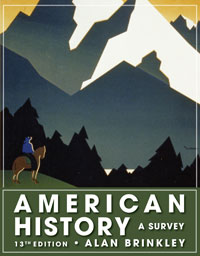1 A) grew fastest in the South. B) became increasingly rural. C) doubled. D) was not growing as fast as the population of Europe. E) was migrating westward. 2 A) a superior natural harbor. B) liberal state laws that made the city attractive for both foreign and domestic commerce. C) an absence of "nativist" sentiment. D) unrivaled access to the interior. E) the primary port of entry for European immigrants. 3 A) already obsolete. B) beginning to fill with silt from the Great Lakes. C) the greatest construction project Americans had ever undertaken. D) cited as an example of how not to construct a canal. E) already paid for. 4 A) immigrants from Europe B) northeast farmers C) the growth of the population as a whole D) immigrants from Europe and the growth of the population as a whole E) All these answers are correct. 5 A) return all land to Native Americans. B) enact more restrictive naturalization laws. C) increase aid to education so voters would be literate. D) make immigrants feel this was their home. E) end all immigration. 6 A) an increased white settlement in the Northwest. B) an increased white settlement in the Southwest. C) the renewed cooperation between states and the national environment on internal improvement projects. D) the conviction that the national government should be responsible for all internal improvements. E) the dominance of steamboat transport. 7 A) played only a secondary role in the nation's transportation system. B) replaced canals as the most important means of transportation. C) generated little interest among American businessmen. D) consisted of a few long lines, which were not connected to water routes. E) were built alongside the canals. 8 A) development of a national banking system. B) creation of corporations. C) decline of the small-town merchant and general store. D) rise of the factory. E) decline of American agriculture. 9 A) was expensive to use and thus offered limited advantages for American industry. B) slowly developed as a tool for commerce in the United States. C) was intended to replace newspapers. D) was invented in just a week by Samuel F. B. Morse. E) was first used to announce the victory of James K. Polk in the presidential election of 1844. 10 A) American inventors. B) national research universities. C) innovative businessmen. D) labor unions. E) All these answers are correct. 11 A) overcrowding in American cities. B) a dramatic increase in food production. C) the use of slaves in manufacturing industries. D) an increase in European immigration. E) an excess agricultural labor force. 12 A) enlist young women from farm families. B) recruit whole families from rural areas. C) recruit newly arrived immigrants. D) enlist young men from farm families. E) provide liberal pay and living conditions. 13 A) workers resented being watched over so carefully. B) in the highly competitive textile market, manufacturers were eager to cut labor costs. C) unions undermined the owners' authority. D) men found jobs in the factories, and they disliked the paternalistic system. E) it adversely affected work quality. 14 A) South and Southwest. B) Old Northwest. C) New England region and the mid-Atlantic states. D) Ohio Valley. E) southern Great Lakes region. 15 A) successfully made the transition to factory work. B) created the nation's earliest trade unions. C) had abandoned the republican vision of American work. D) allied themselves with the new capitalist class. E) developed a niche market catering to the middle class. 16 A) better machine tools B) interchangeable tools C) improved water-power generators D) new steam engines E) the development of wood stoves 17 A) the Northeast to the Northwest. B) the Northeast to the Gulf Coast. C) the East Coast to the West Coast. D) New York to New Orleans. E) Richmond to Atlanta. 18 A) a system of federal railroad regulations. B) the invention of the telegraph. C) slave labor to build the lines. D) a canal and river system that supported the lines. E) the fuel switch from wood to coal. 19 A) ethnic divisions between natives and immigrants B) the availability of cheap labor C) slavery D) the strength of the industrial capitalists E) laws unfavorable to labor 20 A) the actual living standard of the workers was improving. B) there was no social mobility, but people were content to stay where they were in the social system. C) geographic mobility was limited, so there were few other opportunities. D) the political system offered few ways to express resentment. E) All these answers are correct. 21 A) helpmate to workmate. B) "republican mother" to "democratic female." C) passive domestic to radical feminist. D) income producer to income consumer. E) obedient helpmate to coequal partner in the household. 22 A) were generally viewed as entertainment for the nation's elite classes. B) led to a riot at the Astor Place Opera House. C) were not particularly enjoyed by antebellum Americans. D) were played before quiet, respectful audiences in American cities. E) were performed in America by British actors. 23 A) northwestern goods were sold to residents of the Northeast. B) northeastern industries sold their products to the Northwest. C) northwestern grain was sold to the South, which allowed it to grow more cotton. D) the Northwest was able to feed itself so it did not align with any other section. E) northwestern goods were sold to residents of the Northeast and northeastern industries sold their products to the Northwest.





